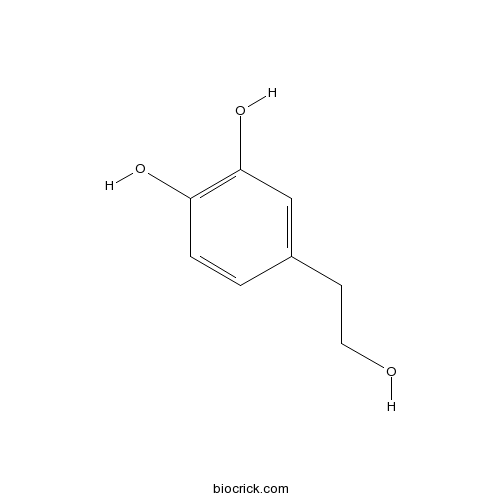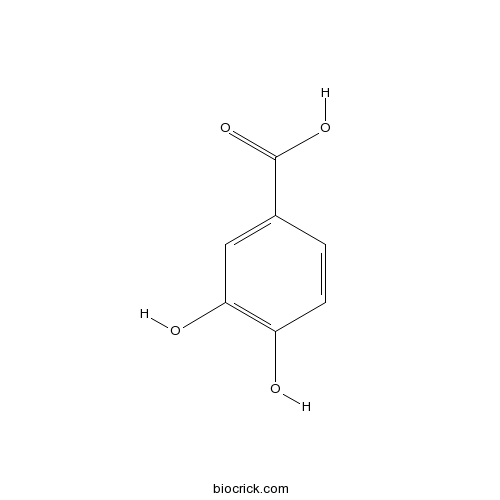Aquilegia yabeana
Aquilegia yabeana
1. The products in our compound library are selected from thousands of unique natural products; 2. It has the characteristics of diverse structure, diverse sources and wide coverage of activities; 3. Provide information on the activity of products from major journals, patents and research reports around the world, providing theoretical direction and research basis for further research and screening; 4. Free combination according to the type, source, target and disease of natural product; 5. The compound powder is placed in a covered tube and then discharged into a 10 x 10 cryostat; 6. Transport in ice pack or dry ice pack. Please store it at -20 °C as soon as possible after receiving the product, and use it as soon as possible after opening.
Natural products/compounds from Aquilegia yabeana
- Cat.No. Product Name CAS Number COA
-
BCN5871
2-(3,4-Dihydroxyphenyl)ethanol10597-60-1
Instructions

-
BCN4537
3,4-Dihydroxybenzoic acid99-50-3
Instructions

Flexible stigma presentation assists context-dependent pollination in a wild columbine.[Pubmed: 16411927]
Stigma presentation has received much less attention than pollen presentation. Investigation of the various forms of stigma presentation may reveal previously undescribed reproductive mechanisms in plants. Here we investigated stigma presentation in the spring-flowering herb Aquilegia yabeana, whose linear stigma gradually develops over the lifetime of the flower. The degree of stigma development and recurvature are influenced by the timing of pollen deposition, apparently to favor cross-pollination. In this species, autogamous self-pollination was found to occur in the middle of the receptive period of the stigma if prior cross-pollination did not occur. However, because later-arriving cross-pollen was deposited closer to the ovary, it reached the base of the style before self-pollen which had been deposited earlier. Flexible stigma presentation helps the flower to maximize pollen resources under unreliable pollination conditions, taking advantage of both selfing and outcrossing. This is the first description of stigma development regulated by pollen deposition in a wild plant.
Temporal floral sex allocation in protogynous Aquilegia yabeana contrasts with protandrous species: support for the mating environment hypothesis.[Pubmed: 15212393]
We tested one of the predictions of Brunet and Charlesworth (1995) that relative floral sex allocation will vary temporally with the mating environment and that the form of dichogamy (protandry vs. protogyny) will select for the pattern of variation in male versus female resource allocation. In many hermaphroditic plant species, allocation to female function (ovule number) decreases from early to late flowers within inflorescences as a result of resource limitation or ontogenetic changes. This pattern may obscure the effects of the mating environment and dichogamy on selection for allocation patterns in protandrous species (male allocation increases regardless). By examining a protogynous species the alternative pattern of temporal variation in resource allocation is predicted, namely that allocation to male function should decrease (or female allocation increase) throughout the flowering sequence. This pattern was observed in protogynous Aquilegia yabeana (Ranunculaceae), in which ovule number per flower remained constant whereas pollen number decreased in sequentially blooming flowers. These observations support the temporal sex allocation hypothesis of Brunet and Charlesworth (1995).


